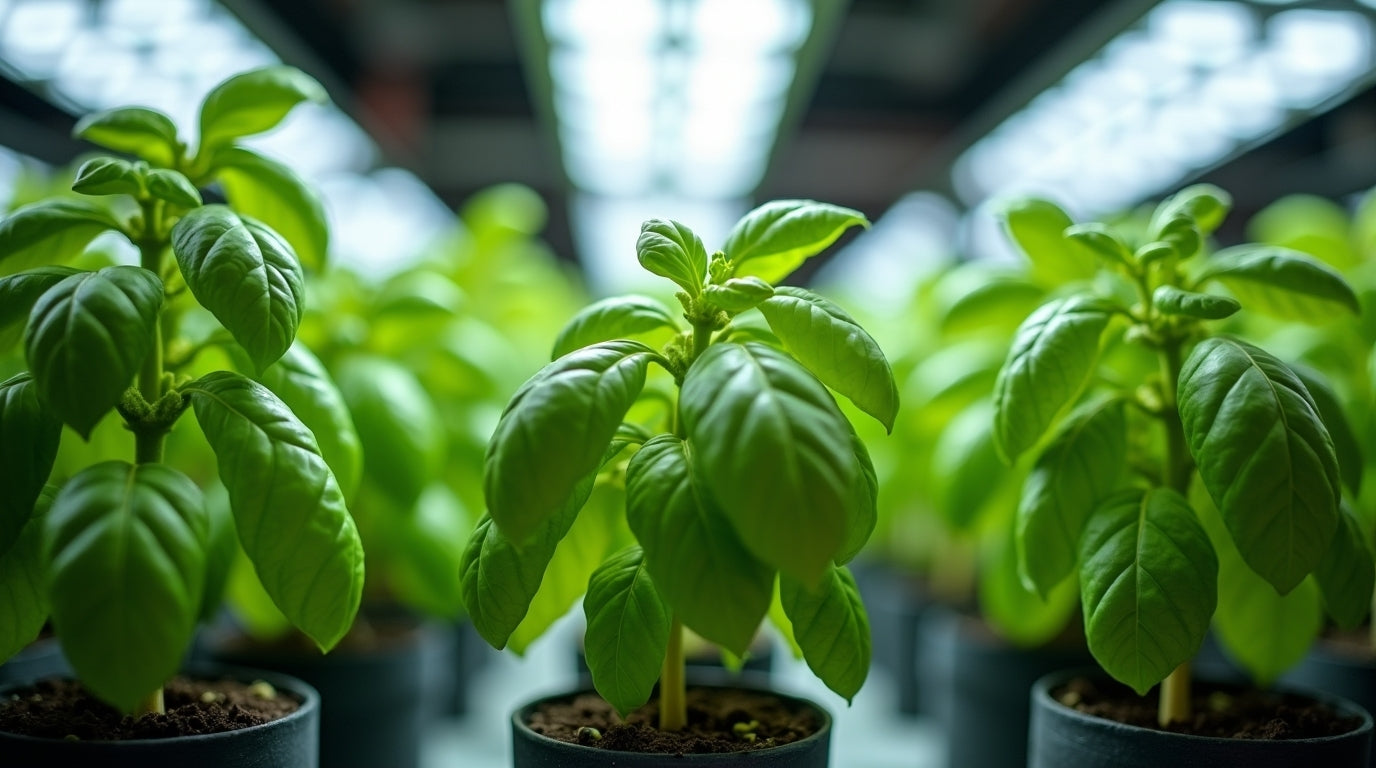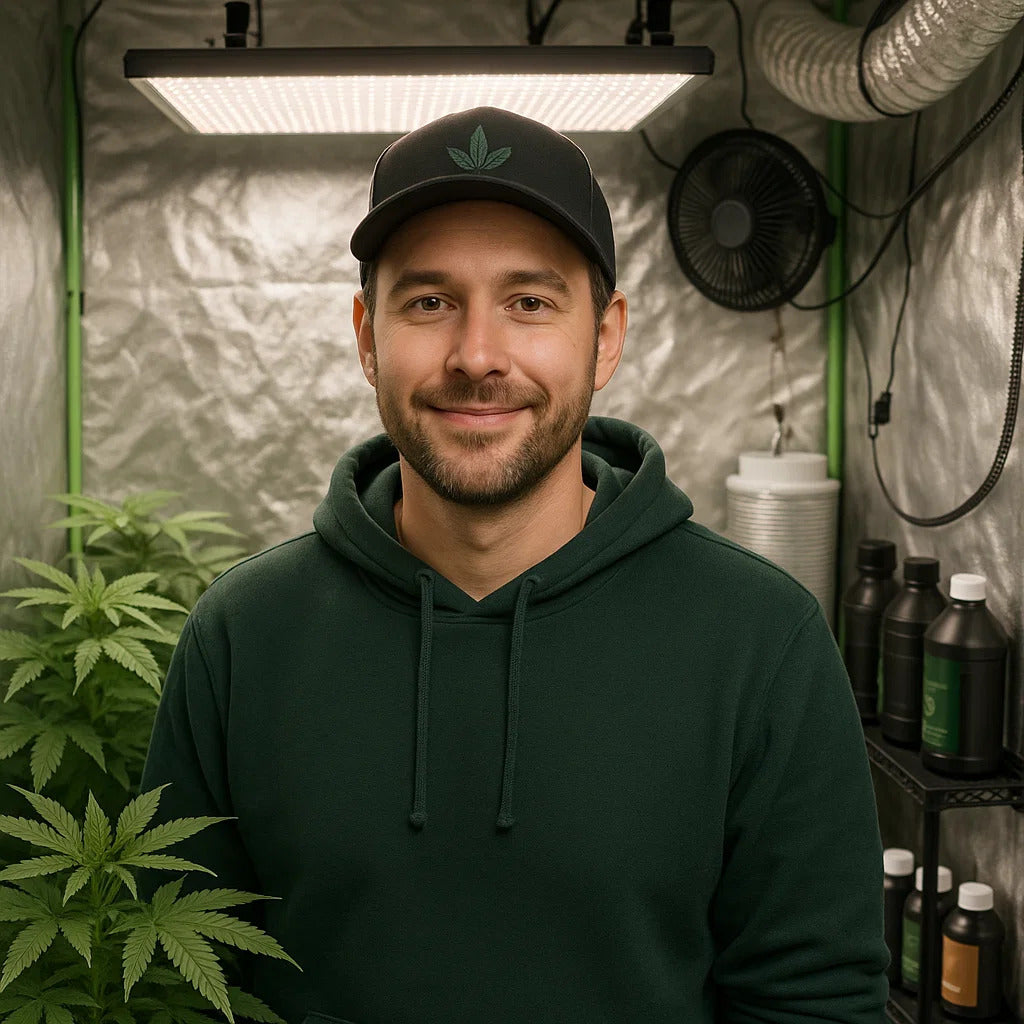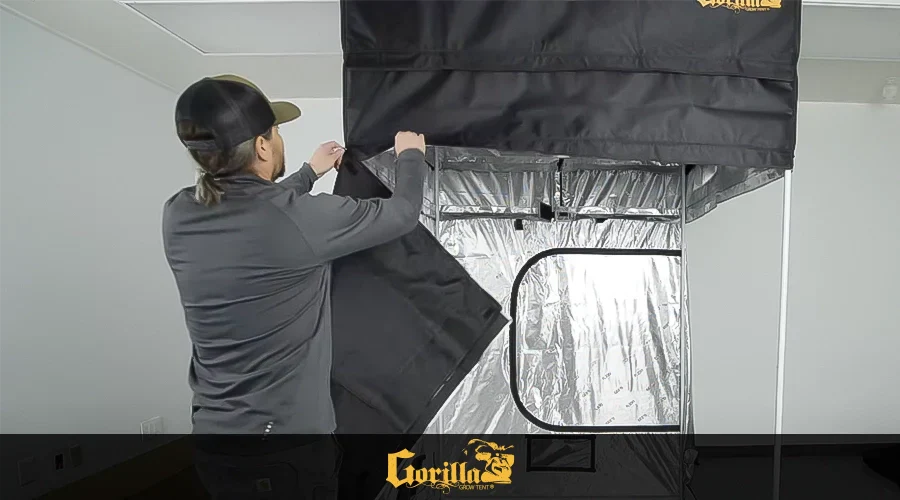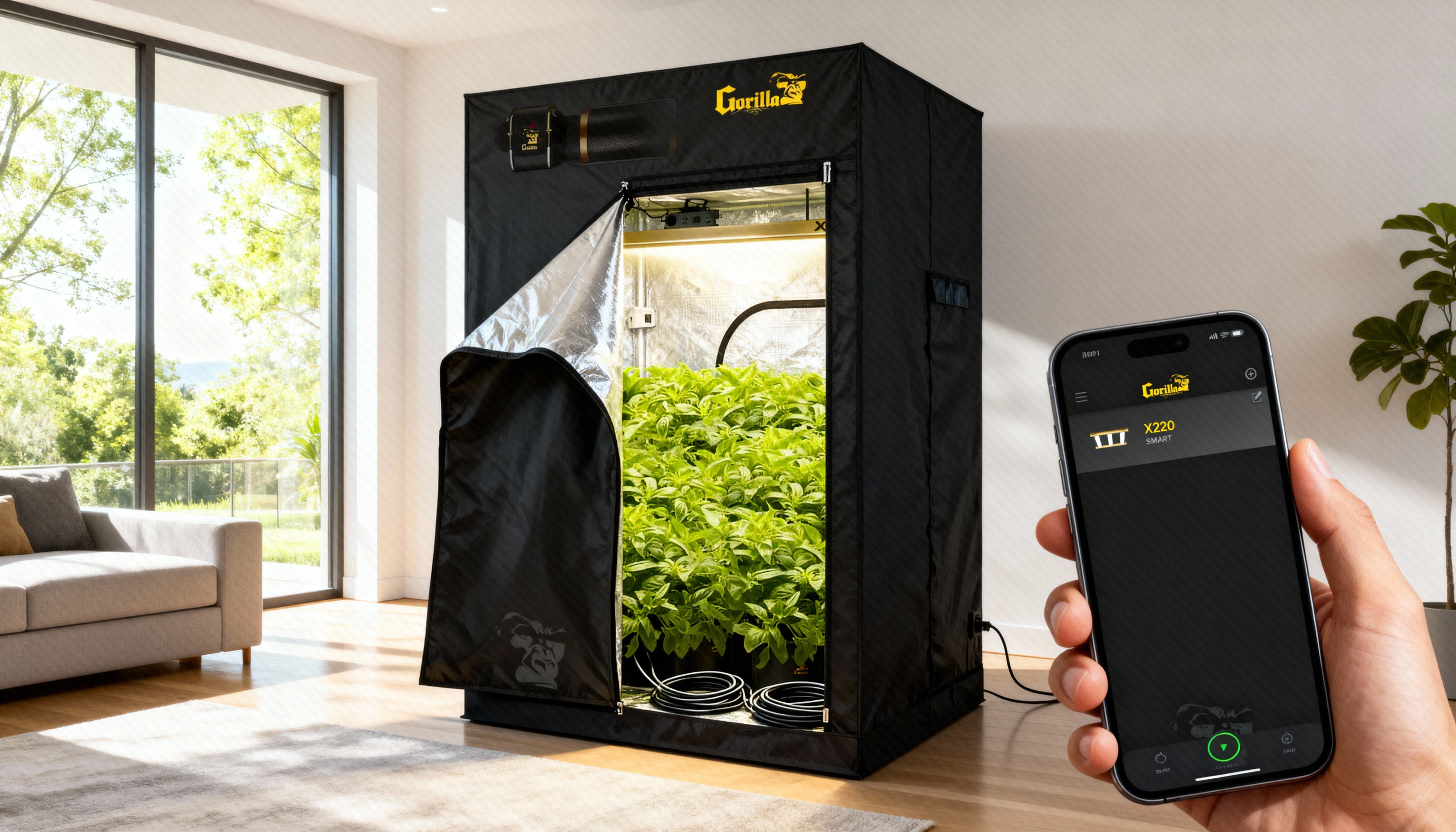
Best Plants for Your Growing Tent: Your Complete Guide to Indoor Growing Success
Starting your indoor garden journey but not sure which plants to grow? You're in the right place! Choosing the best plants for your growing tent can make the difference between a thriving garden and a frustrating experience. Whether you're working with a compact 2x2 grow tent or a spacious 5x5 setup, the right plant selection sets you up for success from day one.
Indoor growing offers complete control over your environment, meaning you can cultivate fresh herbs, vibrant vegetables, and beautiful flowers year-round—no matter what Mother Nature throws at you. The key is matching plants to your space, experience level, and growing goals. Let's dive into the top plant choices that will help you maximize your grow tent setup and enjoy bountiful harvests.
Best Herbs to Grow in Your Tent
Herbs are the perfect starting point for beginner indoor growers. They're forgiving, fast-growing, and incredibly rewarding. Plus, there's nothing quite like snipping fresh basil for your pasta or mint for your mojito!
Basil: The Indoor Growing Champion
Basil tops the list for good reason. This aromatic herb thrives in controlled indoor environments with temperatures between 65-75°F. Sweet basil varieties grow quickly and can be harvested continuously throughout the growing season. Simply pinch off the top leaves regularly to encourage bushier growth and prevent flowering.
Basil loves bright light—aim for 12-16 hours daily using quality LED grow lights. It's also relatively compact, making it ideal for smaller tents. You can easily fit 4-6 basil plants in a 2x4 grow tent, providing enough fresh herbs for daily cooking.

Mint and Cilantro: Flavor Powerhouses
Mint and cilantro are equally rewarding for indoor cultivation. Mint grows aggressively (almost too well!), so keep it in its own container to prevent it from taking over. Cilantro prefers slightly cooler temperatures around 60-70°F and appreciates consistent moisture.
Both herbs require less intense lighting than fruiting plants, making them energy-efficient choices. They also complement each other perfectly in the kitchen, giving you fresh ingredients for everything from Vietnamese pho to Middle Eastern tabbouleh.
Parsley, Thyme, and Oregano
These Mediterranean herbs are incredibly low-maintenance and perfect for beginners. They tolerate a wide range of conditions and don't mind if you forget to water them for a day or two. Thyme and oregano are particularly drought-tolerant once established.
These herbs grow more slowly than basil, but they're perennials that keep producing for years. One planting can provide fresh herbs through multiple growing seasons, making them excellent value for your indoor grow room real estate.
Top Vegetables for Indoor Growing Tents
Moving beyond herbs, certain vegetables excel in grow tent environments. The key is choosing varieties bred for compact growth and container cultivation.
Leafy Greens: Lettuce, Spinach, and Kale
Leafy greens are indoor growing superstars. They mature quickly (30-45 days from seed), don't require intense lighting, and can be harvested continuously. Lettuce varieties like butterhead, romaine, and loose-leaf all work beautifully in grow tents.
Spinach and kale are nutritional powerhouses that actually prefer the cooler temperatures you might struggle to avoid in winter growing. Keep temperatures between 60-70°F for optimal growth. These greens are also space-efficient—you can grow 12-16 heads of lettuce in a 4x4 grow tent, providing fresh salads for weeks.

Cherry Tomatoes and Peppers
If you're ready for a challenge, cherry tomatoes and peppers offer incredibly rewarding results. These fruiting plants need more light, attention, and vertical space than leafy greens, but the flavor of homegrown tomatoes makes it worthwhile.
Choose determinate (bush) tomato varieties or dwarf pepper cultivars bred for containers. They'll need support structures like tomato cages or trellises. The adjustable height feature of Gorilla Grow Tents becomes crucial here—use the extension kit to accommodate plants that can reach 3-5 feet tall.
Radishes and Green Beans
Radishes are the speedsters of the vegetable world, ready to harvest in just 25-30 days. They're perfect for filling gaps between other plants or for impatient growers who want quick results. Bush varieties of green beans also adapt well to container growing and produce generous yields in compact spaces.
Both vegetables appreciate consistent moisture and good air circulation. Make sure your grow tent ventilation system is dialed in to prevent mold and mildew issues.
Flowering Plants and Microgreens
Microgreens: Maximum Nutrition, Minimum Space
Microgreens might be the most efficient use of your grow tent space. These nutrient-dense seedlings are ready to harvest in just 7-14 days and pack up to 40 times more vitamins than their mature counterparts. Popular varieties include arugula, radish, broccoli, and sunflower shoots.
You can grow microgreens in shallow trays stacked on shelving, making vertical use of your tent space. A single 2x2 grow tent can produce multiple harvests per week, perfect for restaurant sales or personal use.
Edible Flowers
Don't overlook the beauty and culinary potential of edible flowers! Nasturtiums, pansies, and calendula all grow well indoors and add color to salads and desserts. They require similar conditions to herbs and bring a delightful aesthetic element to your grow space.

Matching Plants to Your Tent Size
Plant selection should align with your available space. Here's a quick breakdown:
- 2x2 or 2x4 tents: Focus on herbs, microgreens, or 1-2 larger plants like peppers
- 3x3 or 4x4 tents: Mix of herbs and vegetables, or 4-6 medium-sized plants
- 5x5 tents and larger: Full vegetable gardens with companion planting strategies
The beauty of grow tent kits is that everything is designed to work together from day one. You won't waste time figuring out compatibility issues between components.
Essential Growing Tips for Success
Regardless of which plants you choose, these principles apply universally:
Light Requirements Matter: Match your plants' needs to your lighting setup. Leafy greens need 12-14 hours of light daily, while fruiting plants like tomatoes need 14-18 hours.
Temperature Control is Key: Most plants thrive between 65-75°F during the day and slightly cooler at night. Use thermometers and adjust your ventilation accordingly.
Don't Overwater: This is the number one killer of indoor plants. Check soil moisture with your finger before watering. Most plants prefer the soil to dry slightly between waterings.
Start with Quality Genetics: Whether you're growing from seed or clones, begin with reputable sources. Healthy plants from the start mean fewer problems down the road.
Rotate Your Crops: Plan succession planting so you always have something ready to harvest. As one crop finishes, have the next generation ready to take its place.
For more detailed guidance, check out our comprehensive indoor gardening guide that walks through every step of the process.
FAQ: Best Plants for Growing Tents
Q: What's the easiest plant to grow in a grow tent for complete beginners?
A: Lettuce and fresh herbs like basil are your best bet. They're forgiving, fast-growing, and don't require complicated feeding schedules. You can harvest lettuce in 30 days and snip basil leaves continuously once the plant is established.
Q: Can I grow different types of plants together in the same tent?
A: Yes, but choose plants with similar environmental needs. Herbs and leafy greens work well together since they prefer similar temperatures and lighting. Avoid mixing plants that need drastically different conditions, like cool-loving lettuce with heat-loving peppers.
Q: How many plants can I fit in a 4x4 grow tent?
A: This depends on plant size. You can fit 12-16 small plants like herbs, 8-10 medium plants like leafy greens, or 4-6 larger plants like tomatoes or peppers. The key is ensuring adequate airflow and light penetration to all plants.
Q: Do I need special seeds for indoor growing?
A: Not necessarily, but look for varieties described as "compact," "dwarf," "bush," or "suitable for containers." These cultivars are bred for smaller spaces and perform better than traditional garden varieties in grow tents.
Q: How long does it take to harvest my first crop?
A: Microgreens are ready in 1-2 weeks, radishes in 3-4 weeks, lettuce in 4-6 weeks, and herbs like basil in 6-8 weeks. Fruiting plants like tomatoes and peppers take 10-12 weeks from seed to first harvest but continue producing for months.
Quick Takeaway: Featured Snippet Summary
The best plants for growing tents include fast-growing herbs (basil, mint, cilantro), nutrient-rich leafy greens (lettuce, spinach, kale), and productive vegetables (cherry tomatoes, peppers). Beginners should start with herbs or microgreens that mature quickly and tolerate mistakes. Match plant selection to your tent size and lighting capabilities for optimal results.
Ready to Start Growing?
Now that you know which plants thrive in grow tent environments, it's time to get started! The beauty of indoor gardening is that you can begin small and expand as your confidence grows.
Whether you're cultivating fresh herbs for your kitchen or experimenting with exotic vegetables, a quality grow tent gives you the control needed for consistent success. Gorilla Grow Tents provide the durable, professional-grade foundation that serious growers trust—backed by industry-leading customer support and the strongest construction available.
Browse our complete collection of tents, lights, and accessories to build the perfect system for your growing goals. Your first harvest is just weeks away. Start growing strong today!

Lena Myles
I'm a mushroom enthusiast and home cook based in Oregon. I'm passionate about foraging and creating fungi-focused recipes, especially delicious, plant-based dishes using gourmet mushrooms like trumpet, shiitake, and oyster. When I’m not in the kitchen, you’ll usually find me wandering the woods in search of new wild flavors.


